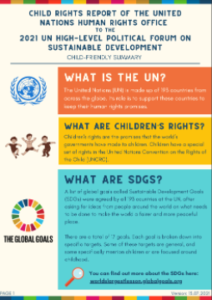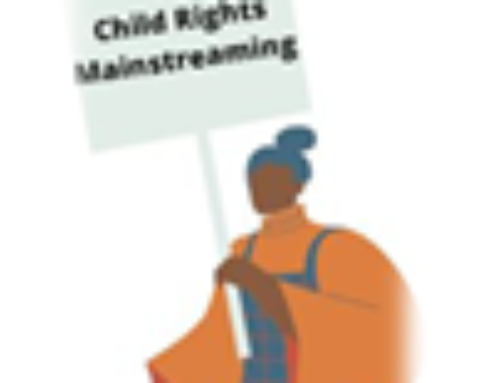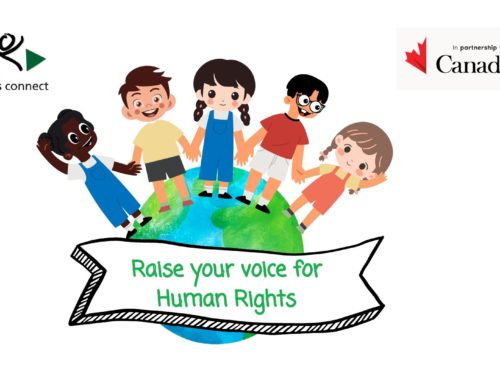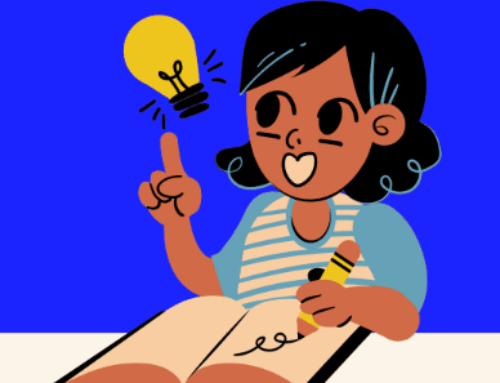Children have been historically excluded from discussions at the Human Rights Council
The 2017 Human Rights Council (HRC) resolution on the protection of child rights in the implementation of the 2030 Agenda for Sustainable Development recognizes the importance of children’s rights as an integral part of sustainable development strategies and urges States to mainstream them into all legislation, policies, programmes and budgets aimed at implementing the 2030 Agenda. The resolution also calls on States to facilitate the meaningful participation and active consultation of children in all issues affecting them related to the implementation, monitoring, follow-up and review of the 2030 Agenda. However, children have historically been excluded from discussions and decision-making at the UN, including the HRC, the inter-governmental body within the UN system responsible for the promotion and protection of all human rights around the globe. This is a major concern Child Rights Connect has been regularly sharing with States in formal and informal ways. “Adultism”, or the belief that adults’ opinions are inherently more valuable than children’s and that, as such, they are entitled to act on behalf of children without agreement or in ways that interfere with their capacity to exercise agency over their lives, has deprived children of their right to be heard and to express their views in matters affecting them, enshrined in the United Nations Convention on the Rights of the Child (UNCRC). For decades, even in processes specifically dedicated to the rights to the child, such as the HRC annual full-day meeting on the rights of the child (ADRC), children have been denied their right to participate due to their widespread consideration as vulnerable persons and a fear of tokenism. For decades, the HRC has failed to engage children as a key opportunity to address the most pressing issues faced by children and ground its decisions in the daily realities of children. “I’m told repeatedly that children are an important part of society, but all too often we feel overlooked”, said Bilal, a Slovenian child speaking at the 2021 ADRC.
Statistics on the level of child participation in the ADRC speaks to this challenge. Between 2008 and 2018, no children were empowered to participate in the ADRC. In 2019, based on Child Rights Connect’s close collaboration with other CSOs, UNICEF and the UN Office of the High Commissioner for Human Rights (OHCHR), for the first time, a girl living with disabilities from Moldova was given the opportunity to speak in the ADRC panel discussions. This marked a turning point in the European Union (EU) and Uruguay’s leadership on the ADRC, and was evidence of the value of engaging children in this process. This practice was further extended in 2020 when two environmental child human rights defenders (CHRDs), from Colombia and Ivory Coast, informed the ADRC panel discussions on realizing the rights of the child through a healthy environment (including thanks to Child Rights Connect’s involvement, jointly with members, other CSOs and UN agencies).
The lack of consideration of children as active members of society also meant that making space for children has always been an effort made by civil society only. The historical lack of collaboration between children and State authorities, combined with a lack of understanding by States of the added value of children’s contributions to international policymaking, has meant that children never participated in the HRC through space created by their own governments. Yet, experience shows that open, regular, safe child participation in high level UN processes not only empowers children to act for the realization of children’s rights, including through mobilizing their peers, but also influences decision-making to bring about positive change at the national level.
How Child Rights Connect engaged to address these gaps
2021 presented many opportunities to advance child rights and child participation through global discussions on Sustainable Development Goals (SDGs). At the General Assembly (GA) level, the biennial resolution on the rights of the child adopted in November and the related UN Secretary-General report focused on SDGs. At the Human Rights Council, the Annual full-day meeting on the rights of the child (ADRC) in March focused on the same theme, with a view to inform GA discussions. In addition, the OHCHR submitted its annual report on a child rights perspective to the implementation of SDGs at the High-Level Political Forum (HLPF) in July.

To seize and create synergies between these opportunities, and in line with its Strategic Priority 3 on increased accountability to child rights within the UN, in 2020 Child Rights Connect established a Taskforce on child rights and the SDGs along with nine Network member organisations to promote, through the opportunities mentioned, the idea that the SDGs cannot be achieved without children’s rights being fulfilled and without safe, empowering and sustained child participation in the 2030 Agenda discussions and its implementation. The Task Force mobilized children from around the world to take part in and inform these processes. Building on best practices, the Taskforce developed the methodology for children’s consultations. Overall, 17 national and regional children’s consultations allowed close to 450 children between the ages of 6 and 17 years old, from 25 different countries covering all regions, to share their insights, experiences, challenges and ideas on promoting and safeguarding children’s rights through the SDGs. Following the consultations, the Taskforce assisted the OHCHR in organising two online dialogues with representatives of these groups, selected through peer-to-peer selection processes. A total of 30 children, aged 10 to 17 years old from 15 different countries, participated in the dialogues. For the first time, to identify child panelists for the ADRC, Child Rights Connect supported the OHCHR in issuing a call for interest with clear, transparent and objective criteria to invite the children who had participated in the online dialogues. Two children were subsequently selected to act as panelists at the ADRC and some of the other children who expressed interest participated in the event in other ways. Following an NGO practice of giving their speaking slots to children, Child Rights Connect undertook informal advocacy with the Permanent Missions to the UN of Fiji and Slovenia, two child rights champions at the HRC, to encourage them to coordinate with child human rights defenders (CHRDS) at the national level and give their speaking slot to them in order to enhance child participation at the ADRC. Both Fiji and Slovenia, who already collaborated at the national level with CHRDs and their networks, seized the opportunity and worked on this pilot experience with great commitment. Child Rights Connect also raised the awareness of and prepared adult panelists to ensure they would act in a child-sensitive and appropriate manner, building on child participation and safeguarding best practices. Child Rights Connect exchanged children’s and adults’ statements in advance to ensure interactivity during the live panel discussion and organised a meeting among the child participants for them to coordinate. To echo and reinforce children’s key messages, through the voice of Save the Children, Child Rights Connect’s Taskforce delivered a statement at the ADRC calling on States to adopt a child rights approach to the SDGs through protecting, empowering and investing in children.
The outcomes of the consultations with children also contributed to inform the development of the OHCHR report to the HLPF on children’s rights and the SDGs as well as the joint advocacy paper of Child Rights Connect Taskforce on children’s rights and SDGs submitted in June to the EU and Uruguay to inform the GA resolution on the rights of the child and SDGs. During the HLPF in July, the Child Rights Connect Taskforce also supported the COVID under19 Initiative in organising a side-event where a child-friendly version of the OHCHR report was presented.

What difference did this make
As a result, the Human Rights Council (HRC) Annual Day on the Rights of the Child, held in March 2021, was groundbreaking in several, key respects. The ADRC focus on child rights and the SDGs was a result of the advocacy led by Child Rights Connect’s Taskforce, pushing for greater connection and coherence between the UN decision-making processes held in Geneva (the ADRC) and New York (the GA resolution on the rights of the child). Amplifying the views of children collected through the consultations, the Taskforce used the discussions held at the ADRC to influence, with some success, the GA resolution-making process in New York and language of the ensuing resolution on the rights of the child and SDGs. Importantly, for the first time, the 2021 ADRC was marked by historic child participation, with a total of 7 children taking part in the event, both as State and civil society speakers. As a result of Child Rights Connect’s informal advocacy, Fiji and Slovenia were the first countries ever to give their speaking slots to children from their respective countries to speak at the HRC. “I am grateful for this opportunity given to me by the Government of Fiji to share my views. In participating, I urge all parents, mentors, and leaders to please continue to create spaces for your children to engage in policy making”, said Gerard, a 17-year-old child from Fiji. “In my country there are organizations educating children about democracy and active citizenship, encouraging us to participate and are helping us be heard and be taken seriously”, said Bilal from Slovenia.
Additionally, for the first time, two street-connected children addressed the HRC as representatives of a particularly marginalized category of children. “My hope today is that world leaders take the question of poverty, inequality and climate action very seriously because it affects children most. If nothing is done, then all your efforts to ensure the protection and promotion of children’s rights will be forgotten and this shall affect the development and future of children”, said panelist Fred, a child human rights defender from Save Street Children Uganda as one of the first two street-connected children to ever speak at the HRC. This meant a lot not only for those children who addressed the HRC, who felt empowered through this experience, but also for their peers as explained by Fred: “When I was voted by my peers in the Child Rights Club to represent other children living and working on the street and speak on the Annual Day, I felt so empowered. When I spoke, I could hear my voice echo in the whole room. There and then, I knew I had taken one step to making the world a better place for thousands of children across in the world. I remember on that day, my peers sat and watched the event live. From that time on, we have strengthened our ability in demanding for our rights. We are the change we want to see every day”.
“My hope today is that world leaders take the question of poverty, inequality and climate action very seriously because it affects children most. If nothing is done, then all your efforts to ensure the protection and promotion of children’s rights will be forgotten and this shall affect the development and future of children”, said panelist Fred, a child human rights defender from Save Street Children Uganda as one of the first two street-connected children to ever speak at the HRC.
Efforts made by Child Rights Connect’s Taskforce to prepare and help children and adults speakers interact during the live panel discussion (particularly important given the online environment) led adults to really listen to children during the event, while in the past, children had sometimes felt largely ignored.
Reflections on the wider impact
These strides show a demonstrated change of mindset, behavior and practices towards more safe, empowering and sustained child participation, not only among States but also civil society. Feedback collected by the Taskforce shows that the experience of child participation at the ADRC offered a good practice and motivated key actors to replicate this approach. Through learning by experiencing, relevant actors realized that child participation is possible and became more convinced of the added value of empowering children to speak at sessions of the HRC, beyond the ADRC (which shows the potential sustainability of such a gain).
Child Rights Connect and its Network members will continue to encourage like-minded States, UN agencies and CSOs to replicate this approach through other UN mechanisms and processes, when this is in line with CRC Committee standards and does not threaten the safety of children.1 At the same time, Child Rights Connect is also advocating for other UN mechanisms to change their procedures to become empowering and safe spaces for child participation. In the case of Slovenia, Bilal is part of a network of children and youth that works closely with national authorities, and he was selected by his peers to speak, which multiplies the effects of his participation. The Permanent Mission of Slovenia informally told Child Rights Connect that this experience has strengthened communication and collaboration around international mechanisms with children and youth, and that they are exploring options for involving children more in discussions at the international level. The participation of children as speakers for State delegations testifies to the improved child participation practice of some States and sets a precedent which can inspire other States to embrace such a practice in other international fora (sustainability through replication). This could also pave the way for strengthened collaboration between children and States in effecting change, including at the national level.
More widely, the results of this multilevel initiative demonstrate that, through mobilizing Child Rights Connect’s members and partners around the ADRC and linking Geneva- and New York-based processes through advocacy, civil society can contribute to build political consensus and influence a stronger child rights-based approach both in terms of substance and procedures.
Key lessons learned
Reflecting on lessons learned, this was made possible through building on and strengthening key partnerships, such as with the EU and Uruguay leading on the ADRC and close coordination with children’s supporting organisations (which was crucial for ensuring smooth child participation); engaging in long term advocacy on the added value of child participation; and careful preparations (such as briefing adult panelists in advance about children’s participation which ensured an interactive discussion where children’s views were listened to and taken into account). A remaining challenge to the sustainability of these gains, which Child Rights Connect will seek to remedy, is the need for other CSOs to stand up and take a leading role on the planning, organisation and monitoring of child participation in UN processes.









